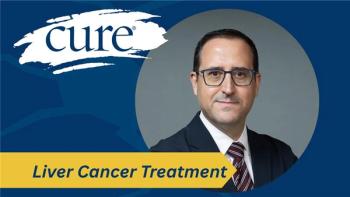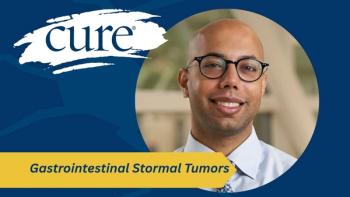
Starting Treatment With Opdivo-Yervoy Combination Followed by Tafinlar-Mekinist Duo Improves Survival in a Subgroup of Patients With Melanoma
Historically, there has been limited evidence to suggest the appropriate treatment sequencing of this melanoma patient population. However, new findings demonstrate starting with Opdivo plus Yervoy followed by Tafinlar in combination with Mekinist may be the best option.
The use of upfront Opdivo (nivolumab) plus Yervoy (ipilimumab) followed by a combination of Tafinlar (dabrafenib) and Mekinist (trametinib) was associated with a greater improvement in survival versus a treatment regimen that first started with Tafinlar and Mekinist among patients with advanced BRAF-mutant melanoma, according to recently published data.
The findings also showed that this particular sequence of Opdivo plus Yervoy followed by Tafinlar combined with Mekinist produced more durable responses to treatment and was better at preventing disease relapse in the central nervous system.
This regimen should now be the optimal treatment sequence for patients with this type of melanoma, according to Dr. Michael B. Atkins, an investigator on the DREAMseq trial.
“In 2021, marketing data showed that 50% of (United States) patients with metastatic BRAF-mutant melanoma were initially treated with BRAF/MEK-targeted therapies and only 25% received combination (Opdivo) and (Yervoy) as initial therapy,” Atkins, who is the deputy director of the Georgetown Lombardi Comprehensive Cancer Center in Washington, said in an interview with CURE®’s sister publication, Targeted Oncology™. “Based on the results of the DREAMseq trial, going forward, the vast majority of patients should receive combination (Opdivo and Yervoy) as their initial therapy.”
Investigators enrolled 265 patients with advanced BRAF-mutant melanoma, a type of skin cancer, onto the DREAMseq trial. Patients were then randomized to first receive either Opdivo plus Yervoy (group A) or Tafinlar combined with Mekinist (group B). Once disease progression occurred, patients then received the alternate therapy. So, patients who first received Opdivo and Yervoy were then treated with Tafinlar and Mekinist (group C) after disease progression. Opdivo and Yervoy were administered to those whose disease progressed after initial treatment with Tafinlar and Mekinist (group D).
The main goal of the study was to analyze the first-line treatment effect on two-year overall survival (percentage of patients who did not die from any cause within first two years of treatment). The investigators also aimed to evaluate the three-year overall survival, as well as overall response rate (percentage of patients whose disease responded to treatment), progression-free survival (time a patient survives without their disease getting worse) and safety.
At a median follow-up of the data at 27.7 months, 133 patients were in group A, 132 in group B, 27 in group C and 46 in group D. At study enrollment, 263 patients had BRAF-mutant melanoma.
Findings from a review of the first two treatment groups demonstrated that patients who received Opdivo plus Yervoy as initial treatment derived a better two-year survival benefit than those treated with Tafinlar plus Mekinist (71.8% versus 51.5%, respectively). Moreover, the study authors noted a median progression-free survival of 11.8 months in those given the Opdivo and Yervoy combination compared with 8.5 months in the group that received Tafinlar in combination with Mekinist.
The overall response rate, however, was relatively similar between the Opdivo plus Yervoy group (46%) and Tafinlar and Mekinist group (43%).
But the benefit gap started to widen between the two groups when the second regimen was administered. For instance, the median progression-free survival among patients who first received Opdivo plus Yervoy and then Tafinlar and Mekinist after initial progression was 9.9 months. This outcome was in comparison to a median progression-free survival of 2.9 months in patients within group D. The overall response rate was also superior in group C (47.8%) when compared with group D (29.6%).
Serious or severe treatment-related side effects were similarly reported across the treatment groups:
- 59.5% in group A;
- 53.1% in group B;
- 53.8% in group C, and
- 50% in group D.
“Starting (treatment) with (Opdivo and Yervoy) immunotherapy results in a 20% absolute improvement in overall survival, (as well as) two years and likely greater beyond this point. It also produces responses that are durable, enabling treatment to be stopped by 84 weeks and does a better job of preventing isolated relapse in the central nervous system,” Atkin concluded. “Also, targeted therapy appears to work as well in the second line setting as it does in the first line, while immunotherapy appears to (be) less effective if given after targeted therapy. Although toxicity and quality of life are worse for the first 12 to 24 weeks, subsequent quality of life is better either because patients have stopped treatment in the absence of disease progression or are continuing with only (Opdivo) monotherapy.”
For more news on cancer updates, research and education, don’t forget to





